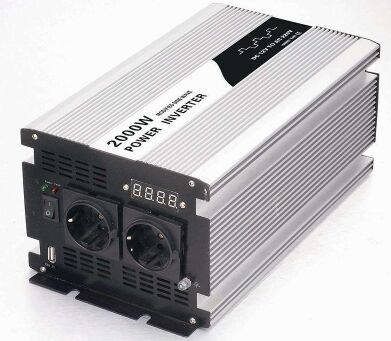The rechargeable inverter power supply includes an inverter, a microcontroller, a DC/DC conversion circuit, and a charger electrically connected to the inverter. The charger includes a charging circuit and a battery voltage detection circuit. The charger includes two charging circuits and a battery voltage detection circuit. Of course, the charger may also include one or more charging circuits and battery voltage detection circuits.
The traditional inverter power supply usually does not include a charging circuit and does not have the function of charging the battery. When the battery needs to be charged, it must be connected to an external charger to achieve the purpose of charging and increase the cost. In order to solve this problem, SCIENTEK ELECTRICAL has produced a rechargeable power inverter.

A charging inverter is a kind of inverter power supply. It converts AC power to low-voltage DC power when the mains power is available and converts AC power with a fixed voltage and frequency to DC power, and charges batteries or storage batteries. ; When there is no mains power, convert the battery or battery from DC to AC, and supply it to household appliances, in the case where the battery is used as a working power source or a backup power source.
Each part of the rechargeable power inverter is controlled by the same microcontroller MCU. The supply voltage of the microcontroller MCU and the charging circuit is provided by the same DC/DC conversion circuit, and the voltage detection is also connected to the microcontroller Circuit, power detection circuit, and temperature detection circuit.
It also includes a charger composed of a charging circuit electrically connected to the inverter. Both the inverter and the charger composed of the charging circuit are controlled by the microcontroller. The supply voltage of the microcontroller and the charging circuit is provided by the same DC-to-C conversion circuit.